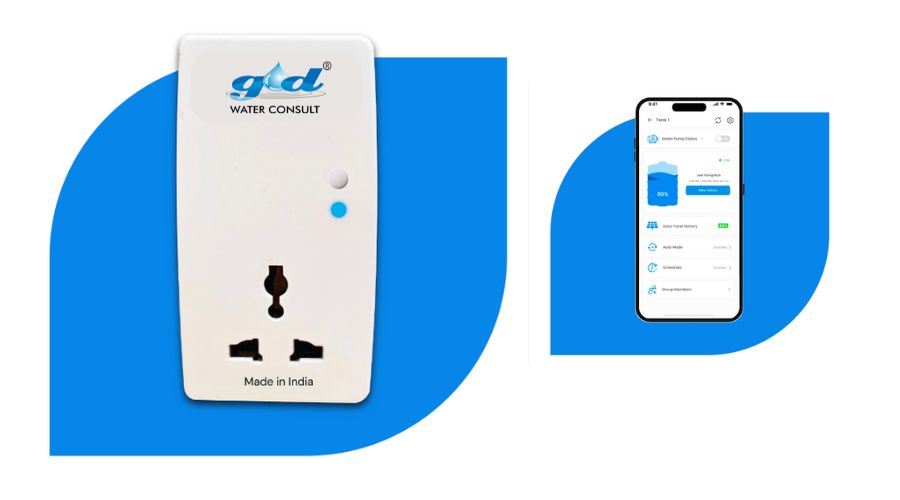Water is one of our planet’s most precious resources, and managing it efficiently is more critical than ever. As urban populations grow and climate change intensifies water scarcity, innovative solutions like IoT Water Level Indicators are transforming how we monitor and conserve water. Here’s why these smart devices are set to become indispensable for everyone—from homeowners to businesses and city planners—in the coming times.
What Are IoT Water Level Indicators?
IoT (Internet of Things) Water Level Indicators are advanced, sensor-based systems that monitor water levels in tanks, reservoirs, and natural water bodies. These devices use technologies such as ultrasonic or pressure sensors to measure water levels and transmit real-time data to cloud platforms or mobile apps, allowing users to monitor and control water resources from anywhere.
How Do IoT Water Level Indicators Work?
-
Sensors detect the water level in tanks or reservoirs.
-
Microcontrollers process this data and send it to the cloud via Wi-Fi, GSM, or other networks.
-
Cloud platforms store and analyze the data, offering insights and alerts.
-
User interfaces (mobile apps or web dashboards) allow users to check water levels, receive notifications, and control pumps or valves remotely.
Key Benefits of IoT Water Level Indicators
1.Real-Time Monitoring and Alerts
-
Instantly check water levels from your smartphone or computer.
-
Receive alerts for leaks, overflows, or critically low levels, preventing water wastage and damage.
2.Water Conservation and Sustainability
-
Optimize water usage by preventing overflows and dry runs.
-
Detect leaks early, reducing water loss and supporting sustainable practices.
-
Enable predictive maintenance by analyzing usage patterns and forecasting needs.
3.Cost and Resource Savings
-
Reduce electricity and water bills by automating pump operations and minimizing manual intervention.
-
Lower maintenance costs through early detection of faults and anomalies.
4.Remote and Automated Control
-
Manage water systems from anywhere, reducing the need for on-site checks.
-
Automate pump control based on real-time data, ensuring tanks are never empty or overflowing.
5.Scalability and Flexibility
-
Suitable for homes, apartments, farms, factories, and even city water systems.
-
Easily integrates with other smart devices and platforms for comprehensive water management.
Why IoT Water Level Indicators Matter for the Future
Addressing Water Scarcity
With global water shortages projected to affect two-thirds of the world’s population by 2025, efficient water management is not just a convenience—it’s a necessity5. IoT Water Level Indicators empower individuals and organizations to use water wisely, conserve resources, and respond quickly to shortages or emergencies.
Supporting Smart Cities and Sustainable Living
As cities grow smarter, IoT-enabled water management systems are becoming integral to urban infrastructure. They help city planners optimize water distribution, prevent floods, and ensure equitable access to water for all residents.
Enhancing Resilience Against Climate Change
Extreme weather events, such as droughts and floods, are becoming more frequent. IoT Water Level Indicators provide the data and automation needed to adapt quickly, protecting homes, businesses, and communities from water-related risks.
Conclusion
IoT Water Level Indicators are revolutionizing water management for everyone. By providing real-time insights, automating controls, and enabling smarter decision-making, these devices help conserve water, save money, and create a more sustainable future. Whether you’re a homeowner, a business owner, or a city planner, adopting IoT water management solutions is a proactive step towards ensuring water security for generations to come.
Ready to make your water management smarter? Explore IoT Water Level Indicators and join the movement towards a sustainable, water-wise future.





2 Comments
John Doe
Posted on: March 13, 2025Leverage agile frameworks to provide a robust synopsis for high level overviews. Iterative approaches to corporate strategy foster collaborative thinking to further the overall value proposition.
John Doe
Posted on: March 13, 2025Leverage agile frameworks to provide a robust synopsis for high level overviews. Iterative approaches